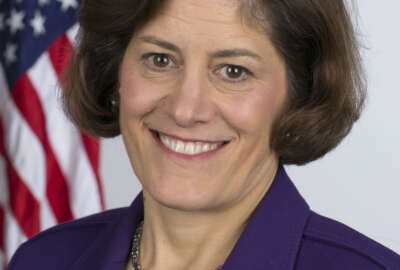
New OPM leadership, hiring tools to give agencies much-needed clarification
The Office of Personnel Management will clarify and create new tools to help agency leaders better understand the authorities they already have to recruit and...
The Office of Personnel Management isn’t trying to reinvent the wheel in 2016. But it will spend this year clarifying and creating new tools to help agency leaders better understand what programs and guidance they can use and how they can best implement them.
“What we found is that in some cases, these tools aren’t available at an agency level or there may be some inconsistency as far as how those tools are being made available, so we’re really focused on trying to identify things that can make a difference across the enterprise,” Mark Reinhold, associate director for employee services and OPM chief human capital officer, told Federal News Radio.
The agency is finalizing a Pathways handbook, a Pathways flexibility tool and hiring manager toolkit to help clear up a few misconceptions about the program.
The new tools are a product of several discussions OPM held with more than 100 representatives from agencies, colleges, universities and other organizations to talk about the challenges they experience when using the Pathways Program, Reinhold said.
“We found that some agencies hadn’t been convinced that the Pathways Program was going to help them get to their goals,” Reinhold said. “What we’re finding is that fortunately, agencies are continuously recognizing the value — or increasingly recognizing the value — of the programs. Just in the past couple of years, we’re beginning to see an uptick in the numbers of hires that are made under these programs.”
OPM reorganized the federal internship program and introduced Pathways in 2012. Since then, agencies have struggled to adjust to the new regulations and expressed frustration that the program limits the kind of targeted recruiting and hiring HR specialists used before.
Reinhold said the new handbooks clearly provide answers to frequently asked questions and specifically describe how agencies could implement Pathways and what flexibilities they have with the program.
OPM also plans to release new data analytics tools for agency and college representatives, Reinhold said.
“[We want to] provide some good data that they can use to look at things like where are potential applicants located, which agencies are hiring and what kinds of jobs are they filling and what locations are they filling those jobs in. And even things like looking at conversion rates for internships and recent grads to permanent jobs,” he said. “We think that’s information that colleges and universities would definitely be interested in.”
The agency also released a new online training course, “Maximizing Employee Engagement,” last month. The class describes engagement best practices and gives participants practical examples where they can use them in their own offices.
“We’re really pleased with the uptake and response so far,” Reinhold said. “We’ve had a number of agencies that have offered it to their entire leadership cadre, so we’re really excited about continuing to roll it out.”
Much of the agency’s work in this field is in support of the “people and culture” cross-agency priority goal.
Overall, governmentwide engagement scores rose 1 percent in the 2015 Federal Employee Viewpoint Survey, from 63 to 64 percent.
“It doesn’t sound like a lot, but when you consider the fact that this is a huge, huge enterprise that is being surveyed, a 1 percent movement in any given year is actually really significant,” Reinhold said.
Scores had fallen steadily for the past three years, when engagement fell from 67 to 65 percent between 2011 and 2012.
But Reinhold said agencies are rising to the challenge and making engagement a priority.
OPM will host forums with agency senior accountable officials in the coming months to prepare for the 2016 Federal Employee Viewpoint Survey, he said.
Specifically, OPM will look at different ways agencies can boost their response rate to the survey.
“We’re seeing a lot of great progress in agencies in communications and empowering their subordinate organizational components to respond to their local needs and their local engagement challenges,” he said. “We’re seeing some great and innovative partnerships with labor unions. And we’re really seeing agencies step up and approach the results strategically.”
Copyright © 2025 Federal News Network. All rights reserved. This website is not intended for users located within the European Economic Area.
Nicole Ogrysko is a reporter for Federal News Network focusing on the federal workforce and federal pay and benefits.
Follow @nogryskoWFED





